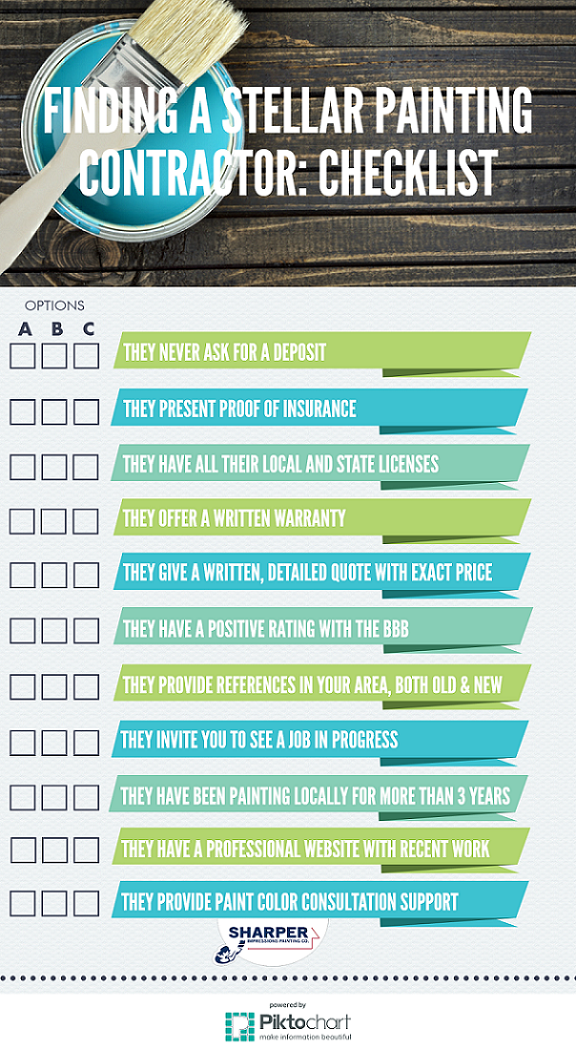Investigate The Function Of Seasonal Factors In The Success Of Commercial External Painting And Reveal The Very Best Times To Safeguard Lasting Outcomes For Your Project
Investigate The Function Of Seasonal Factors In The Success Of Commercial External Painting And Reveal The Very Best Times To Safeguard Lasting Outcomes For Your Project
Blog Article
Article By-Burnham Bagger
When you're intending an industrial external paint project, seasonal aspects can make or break your outcomes. You'll want to think about exactly how temperature and moisture effect paint application and drying times. Picking the ideal season can guarantee your paint adheres correctly and lasts much longer. Yet which seasons are genuinely the best for this sort of work? Allow's discover the crucial elements that can impact your task's success.
The Effect of Temperature on Paint Application
When you're planning an industrial outside painting job, the temperature level can substantially impact exactly how well the paint adheres and dries out.
Preferably, you want to repaint when temperatures range in between 50 ° F and 85 ° F. If it's too cold, the paint may not cure appropriately, leading to issues like peeling or splitting.
On https://patch.com/colorado/denver/business/listing/347249/improovy-painters-denver , if it's as well warm, the paint can dry out as well rapidly, preventing appropriate adhesion and leading to an irregular finish.
paint contractors should additionally take into consideration the moment of day; early morning or late afternoon uses cooler temperatures, which can be more desirable.
Always examine the maker's referrals for the particular paint you're making use of, as they commonly offer guidance on the suitable temperature variety for optimum results.
Moisture and Its Result on Drying Times
Temperature isn't the only ecological variable that affects your business exterior painting project; humidity plays a considerable function as well. High humidity levels can reduce drying out times drastically, influencing the overall quality of your paint task.
When the air is filled with wetness, the paint takes longer to cure, which can result in problems like bad attachment and a greater threat of mold development. If you're repainting on a specifically damp day, be planned for extensive wait times between layers.
It's essential to check regional climate condition and strategy accordingly. Ideally, aim for moisture degrees in between 40% and 70% for optimum drying.
Keeping these factors in mind ensures your job stays on track and delivers a long-term coating.
Best Seasons for Commercial Outside Paint Projects
What's the most effective time of year for your industrial exterior painting projects?
Springtime and very early autumn are normally your best choices. During these periods, temperature levels are light, and moisture degrees are frequently lower, producing perfect problems for paint application and drying out.
Avoid summer's intense heat, which can create paint to dry as well promptly, resulting in inadequate adhesion and coating. In a similar way, wintertime's chilly temperatures can prevent appropriate drying and treating, risking the longevity of your paint work.
Aim for days with temperatures in between 50 ° F and 85 ° F for optimal outcomes. Remember to inspect the local weather report for rainfall, as wet conditions can ruin your job.
Planning around these elements ensures your painting job runs efficiently and lasts much longer.
Final thought
Finally, intending your industrial exterior paint projects around seasonal considerations can make a substantial difference in the end result. By organizing work throughout the perfect temperature levels and humidity degrees, you'll ensure far better attachment and drying times. Keep in mind to watch on neighborhood weather forecasts and choose the correct time of year-- spring and very early autumn are your best options. Taking these actions will aid you accomplish a resilient and expert surface that lasts.
